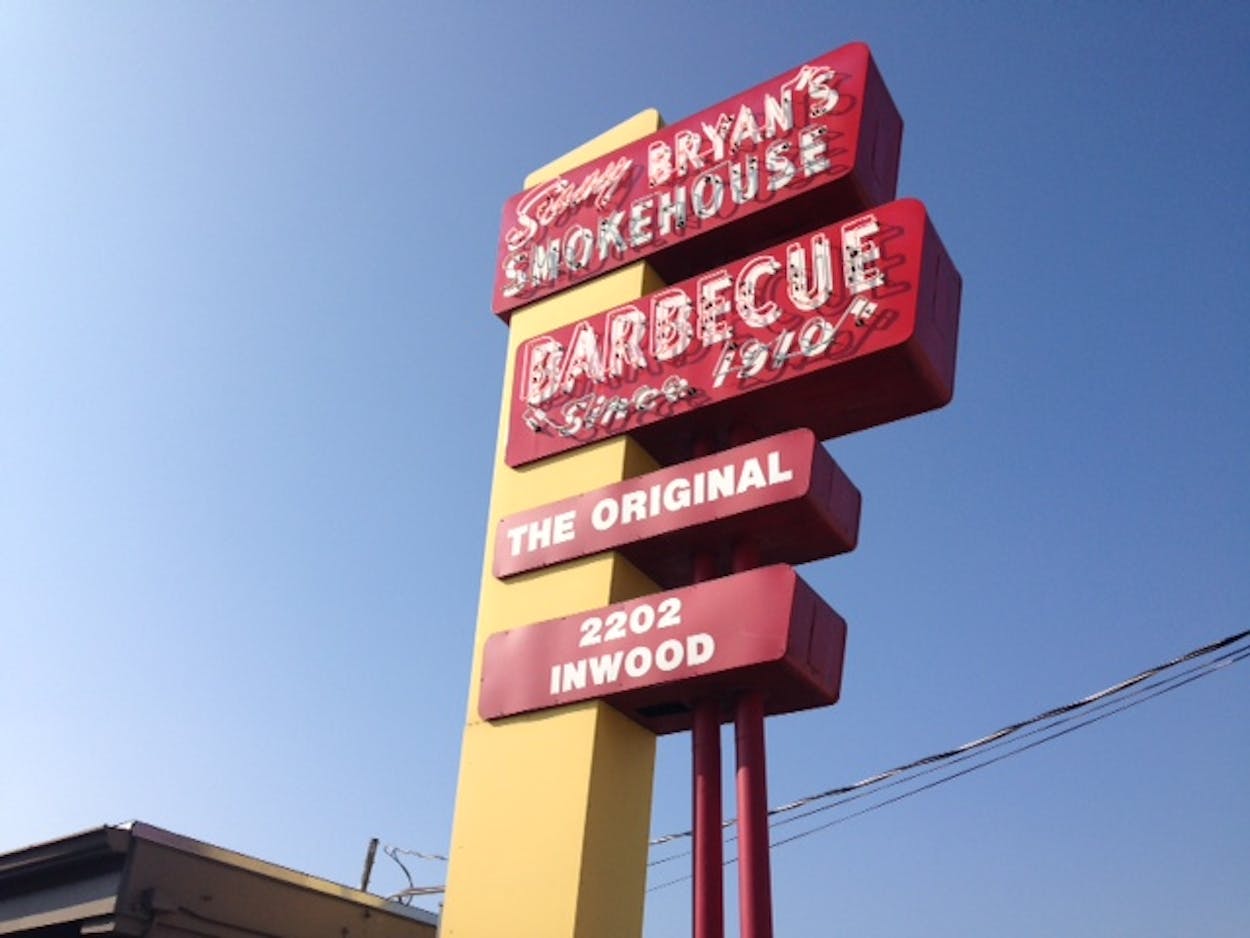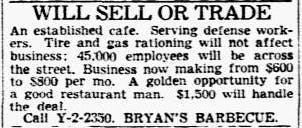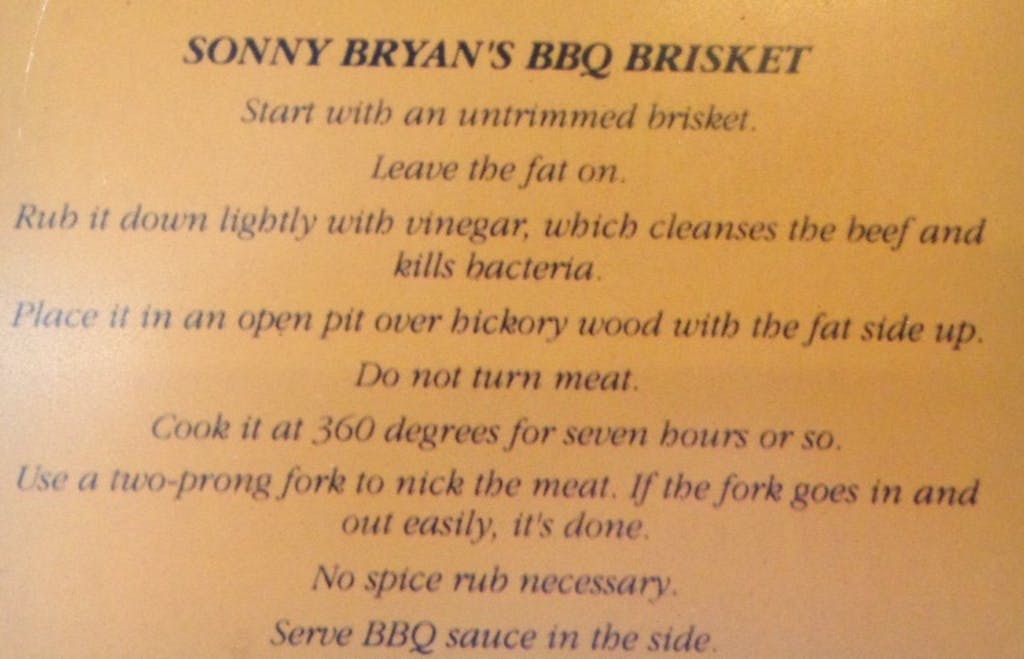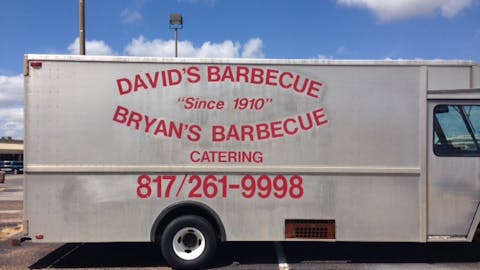If you’ve eaten barbecue in the Dallas-Fort Worth area, there’s a good chance you’ve eaten it at Sonny Bryan’s Smokehouse. For more than a century, four generations of Bryans have operated barbecue restaurants, eventually creating a national franchise that’s now nine strong (eight in DFW and one in Utah). Their saturation in the market and ability to weather a fickle food industry over so many years makes them one of Texas’s bonafide barbecue empires.
Some of this comes across in the “Our Story” section of the restaurant’s website, but the short 125 words that describes their 104-year-long history seemed woefully skeletal to me. Could you really distill that much story into that brief a blurb? I started researching the family, and I found there’s a bit more, ahem, meat to the bone here. Not only have they overseen numerous openings of restaurants, they’ve also dealt with quite a few closings, the threat of property seizures, and they even had a short-lived foray into the frozen food business. What stuck me deepest was the revelation that seventy years ago, a classified ad almost ended the Bryans’ run in the industry.
Like a number of multi-generational family businesses, the Bryans have experienced highs and lows, and the kindling for their business started just a decade after the historic Kreuz Market opened in Lockhart. Elias Bryan moved from Cincinnati to Dallas, where he opened Bryan’s Barbecue on February 13, 1910 in a small building at Jefferson and Beckley, in Oak Cliff.
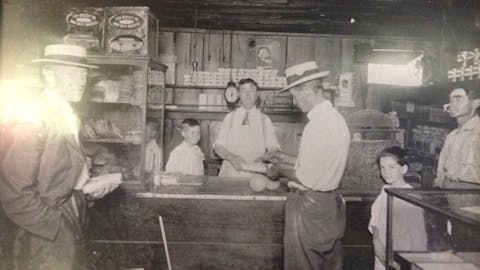
In this original restaurant, Elias taught his son William Jennings “Red” Bryan the barbecue business, but as is the case with many sons, Red had different plans from his father’s. After high school, Red went to SMU where he majored in botany. He eventually opened a floral shop in the space above the Lamar and Smith Funeral Home on Jefferson. Things changed in 1929, when Elias died.
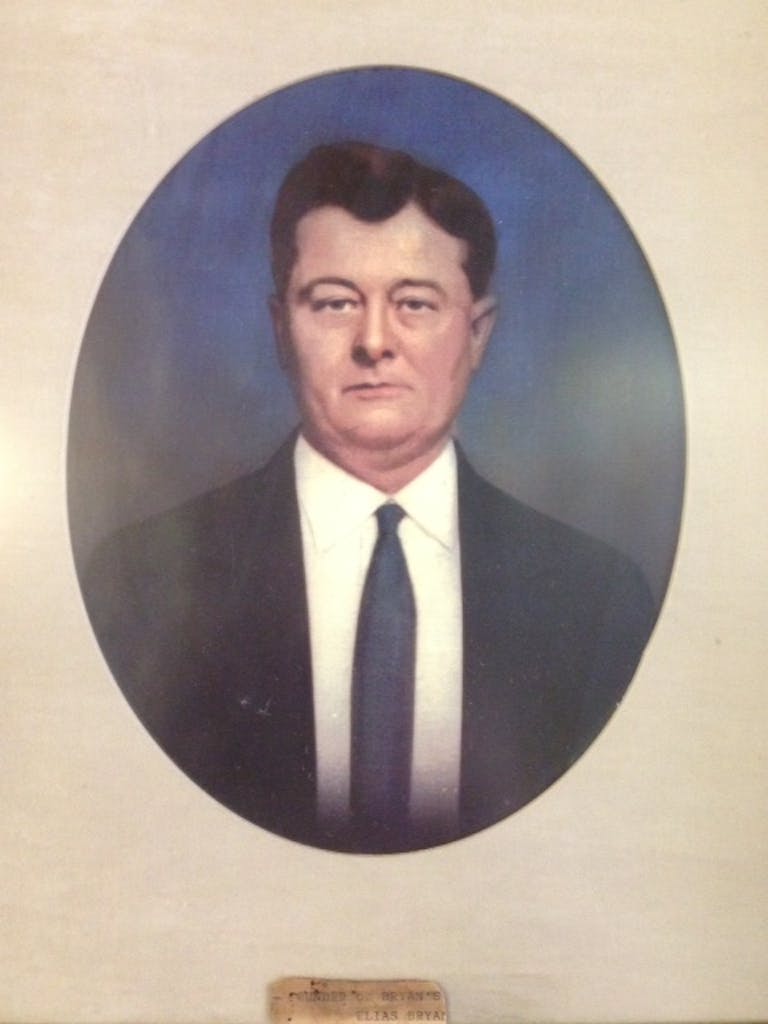
At this point, Red decided to carry on the family’s barbecue business. In 1930, he opened the “Tin Shack” at 530 W. Jefferson, selling burgers for ten cents and barbecued beef sandwiches for fifteen. (I was most intrigued by a different menu item, described in Proud Heritage III: Pioneer Families of Dallas County, written by Red’s grandson William Jennings Bryan III: “During the Great Depression, Red sold the crispy fat scraps from the barbecue in oil-cloth bags. These ‘brownies’ sold for a nickel.”)
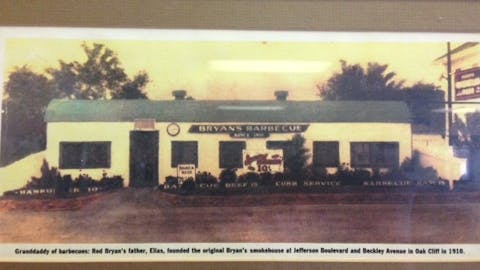
Business was going well, but there’s reason to believe that Red wanted out. An ad appeared in the classified section of the the Dallas Morning News on November 6, 1942. Red was willing to sell the joint, which made up to $800 per month, for just $1,500. Nobody bit. If they had, that may have been where the Bryan family barbecue legacy ended.
But Red obviously held onto the Tin Shack, and in 1947 he moved operations to a new building on the corner of Jefferson and Llewelyn. (He opened on February 13, the same date his father opened the original Bryan’s.) The new joint was a palace. Charles Dilbeck, an architect famous in Dallas for his innovative interior layouts, designed the 200-capacity restaurant. It cost Red north of $50,000 to construct, a hefty sum that wasn’t going to pay it itself off with ten-cent burgers. The restaurant menu changed to include ribs, chicken, a steak sandwich, and, most importantly beer. A bottle cost as much as a barbecue beef sandwich: $0.35. The restaurant was open for seventeen hours every day, from 7:00am to midnight. It was an arduous business, and one that Red sustained for only ten years.
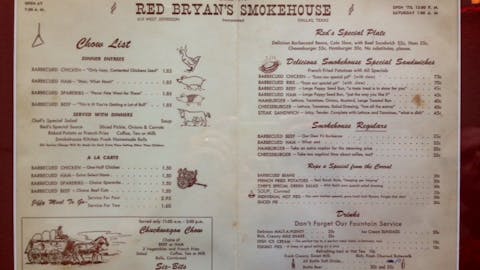
William Jennings Bryan Jr., Red’s “Sonny,” worked at the restaurant with his father and lived in the apartment above it. When reflecting on his father’s business years later, Sonny shared this with the Fort Worth Star Telegram: “My dad started with a little tin shack. He made all his own sandwiches. He knew what all his customers liked. He waited on them all. When he got a bigger place, he lost personal contact. I looked back on his life and saw how happy he was with the smaller place.”
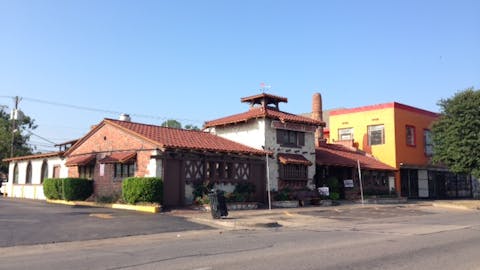
In 1957 the beer sales dried up. As Bryan III recounted in his book, “Cliff Temple Baptist Church and Tyler Street Methodist Church united in 1957 to vote Oak Cliff dry.” Red sold the business and took a short hiatus from barbecue.
In the meantime, on the West Coast, a different Bryan’s Barbecue was flourishing. Red’s brother, Fred Bryan, started a barbecue stand in the Los Angeles Farmers Market on September 11, 1951. The menu was similar to Red’s and included the family’s special barbecue sauce. (The stand is still in operation, but it’s no longer owned by the family. Fred passed away in 2011, but Stall 740 at the L.A. Farmers Market remains the longest-running single operation in the Bryan barbecue family.)

Oddly enough, by 1960 Fred found himself in direct competition with Red. Red had gotten back into barbecue with a branded line of mass-produced, pre-cooked, frozen barbecue. The business was called Smokehouse Barbecue Products Co., and it sent some product to L.A. to be sold at a stall at the Farmers Market. When the Los Angeles Times asked Fred about the new competition, he responded, “How about his nerve?” (Red sold the frozen meat business in 1963 to Archie Sloan and Joe Spiritas of the Texas Meat Packers Co.)
Around the same time that Red was conceptualizing his frozen meat business, Sonny wanted to get his own business off of the ground. In 1958, he convinced his wife, Joanne, also known as Miss Dallas 1947, to start a barbecue joint. As Bryan III tells it, “They sold their home, their 1955 porthole continental kit Thunderbird, and a collection of antique Colt firearms. With $6500 capital and the help of an old master carpenter, Don Hoenstein, Sonny built his Smokehouse at Inwood and Harry Hines.” It was done on such a shoestring budget that they didn’t even have electricity on the first day, which was, you guessed it, February 13.

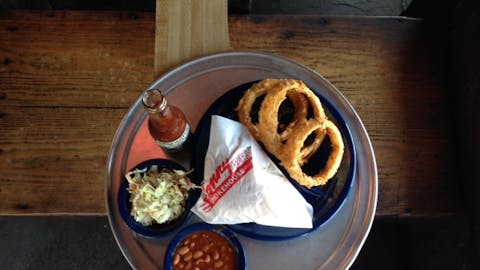

The same building still houses a Sonny Bryan’s Smokehouse. It was the first in a series of Dallas-Fort Worth area restaurants in the chain, but expansion only became possible after Sonny, in bad health, sold out to investors in 1989. For some, the sale seemed like an uncharacteristic move. After seeing his dad struggle with a huge restaurant, Sonny never had the desire to grow. In fact, in a 1974 article by the Dallas Morning News that still hangs in the original location, Sonny is quoted as saying, “If I ever did anything smart, it was not going into the franchise business.”
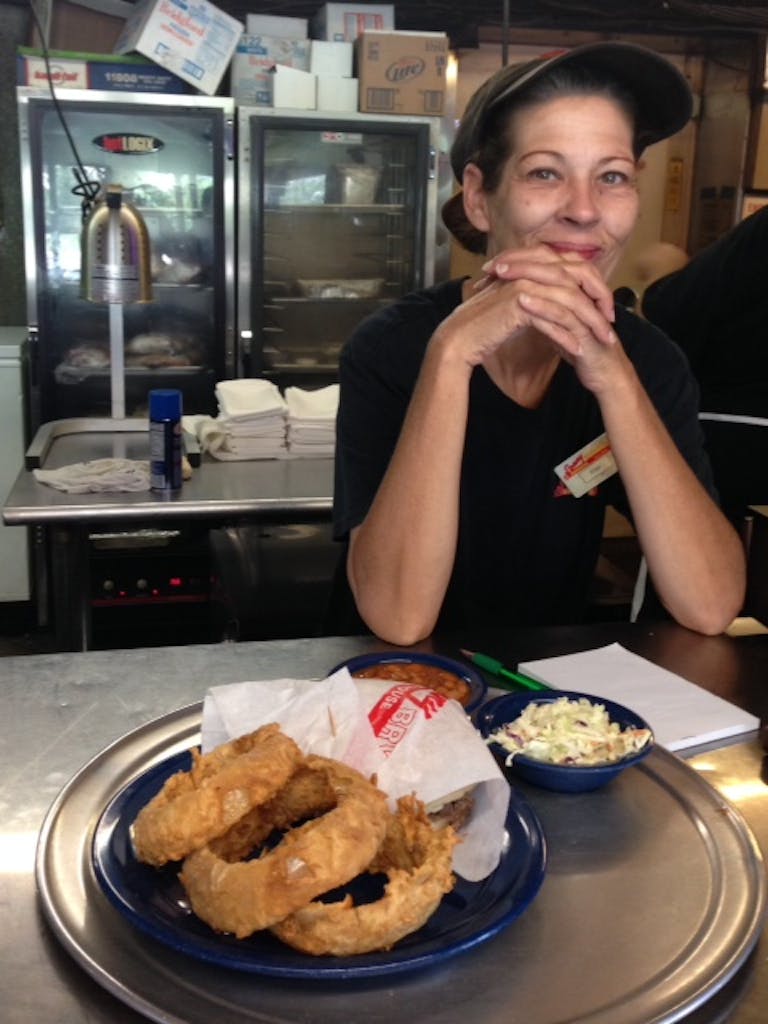
Pam Riddle has worked the register at Sonny Bryan’s on Inwood for thirty years. She told me over an early lunch that things just aren’t the same. She wasn’t referring to the food, but rather she was noting that the energy that once filled the small restaurant is gone. According to Riddle, they used to pump out enough food during a busy lunch hour to be completely sold out by 1:00 p.m. A sign on the door now shows opening hours until 9:00pm. “or until the foods runs out,” which remains more as a relic than an actual warning.

Pam worked with Sonny for a few years before he died. “He was just such a nice guy. He was so good to work with,” she told me. But, he wasn’t without his moments. In the heat of the rush, he had no patience for impatient customers. Riddle recounts, “If you got nasty or rude about your order taking too long, he’d ask for your initials. Say it was D.J. Sonny would look down the line of tickets, find D.J.’s, and crumble it up and throw it in the trash. He’d tell him ‘You don’t have to wait anymore.’ We had enough business then it didn’t matter.”
Sonny’s was popular, but there were other restaurants popping up in the Bryan barbecue empire at the same time. Red dove back into the game in the early sixties, opening at least four locations of Red Bryan’s Barbecue in Dallas, Arlington, and Grand Prairie. Around that time he had another innovative idea: a pop-up barbecue shop called the Bar-B-Q House.
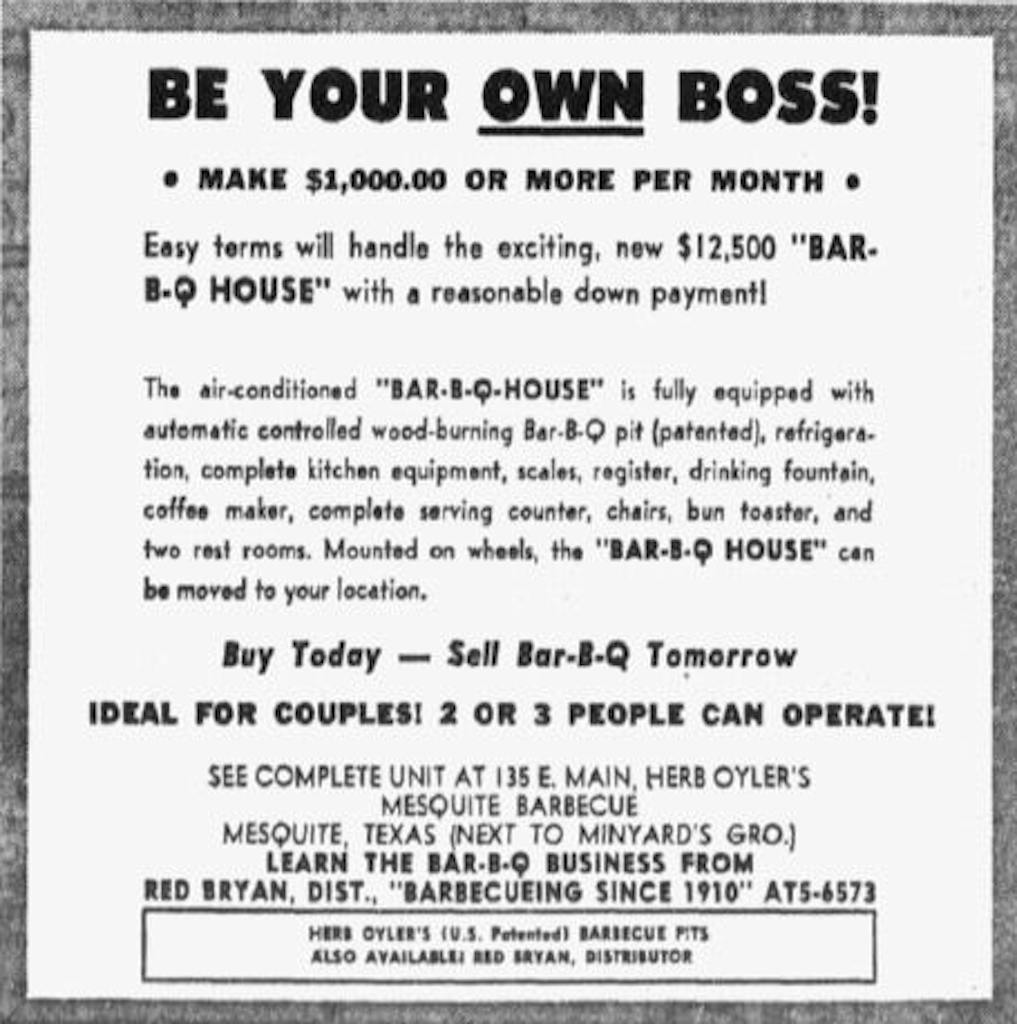
Red Bryan, who at this point was a distributor for Oyler rotisserie smokers, advertised a ready-made, air-conditioned, completely outfitted restaurant on wheels for a mere $12,500 investment. The Bar-B-Q House wasn’t exactly a food truck. Inside there were school desks in the dining area, and the kitchen came with an Oyler pit that Bryan called “the finest pit it has ever been my pleasure to use.” One of the pop-up joints was installed as the new Red Bryan’s Barbecue location in Waxahachie in late 1963, but the new franchise operation didn’t exactly catch on. Red continued to oversee his empire until his death in 1973, which Bryan III describes as happening, “in true Texas style. He had a fatal stroke in his bondholder seats at the Dallas Cowboys football game.”
Cancer took Sonny on 1989. His longtime employee, and Pam Riddle’s father, Charlie Riddle continued to work the pits at the original location, carrying on Sonny’s way of cooking: meat in pans smoked directly over a hickory fire.
Riddle cooked by Sonny’s recipe (above) until he passed away in 1996. (He had been named one of the four best pitmasters in the country just a year before by Parade Magazine.) Riddle was such a fixture at the restaurant that an article in a Chicago paper four months after his death wrote about him like he’d just served them a chopped brisket sandwich.
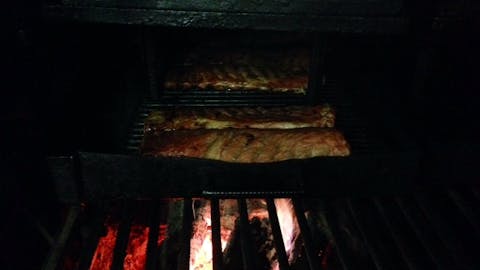
The brisket was the king protein, but the secret was in the barbecue sauce. It’s a thick, tomato-based sauce with a healthy smack of lemon. Dallas chef Dean Fearing recalled his love affair with that sauce. “I’d go eat at Sonny’s place, then go back to the Mansion and try to replicate it, but I couldn’t replicate where he was getting that lemon flavor. He would never give it to me. He gave me bits and pieces all through our friendship. Then, when he got real sick his wife called me over to the house. It was near the end. Sonny said ‘Get a piece of paper. I’m going to give you the sauce.’ When he gave me the sauce, I was like ‘Holy s***!’”
Fearing brought a parade of famous names through the doors at Sonny Bryan’s (something he also famously did with Clark’s, in Tioga). “I started to bring in Julia Child, Jacques Pepin, and Emeril, in the early days,” Fearing said, and he remains a steadfast fan even as the quality of the barbecue has started to suffer.
The current ownership has tried unsuccessfully in the past few years to expand aggressively. In 2010, a franchising agreement with Beautiful Brands International was announced and up to a hundred new franchise locations nationwide were supposed to eventually open. None ever materialized. A year later Sonny Bryan’s announced plans to open fifteen locations in Utah. Only three opened, and all have been shuttered. The current brand is down to eight locations around D/FW. A recent visit to the original provided some great onion rings, but even the chopped beef sandwich was dull without a hefty helping of barbecue sauce. In fact, the best version of Bryan family barbecue might not be at a place with Bryan in the name at all.
I’m referring to Red’s nephew David Bryan Harris. He and his son, Jimmy, opened David’s Barbecue in 1988. They use the same family recipes, and they serve up a mean chopped beef sandwich (full review coming Friday) that I can only imagine would make Sonny proud. Their pit beans even have a little smoke on them, and the onion rings are some of the best I can ever remember eating. The Bryan name made it as far as California, but the real torchbearer might just be in a strip center in Pantego, Texas, run by a man named Harris. He has no plans to franchise.


